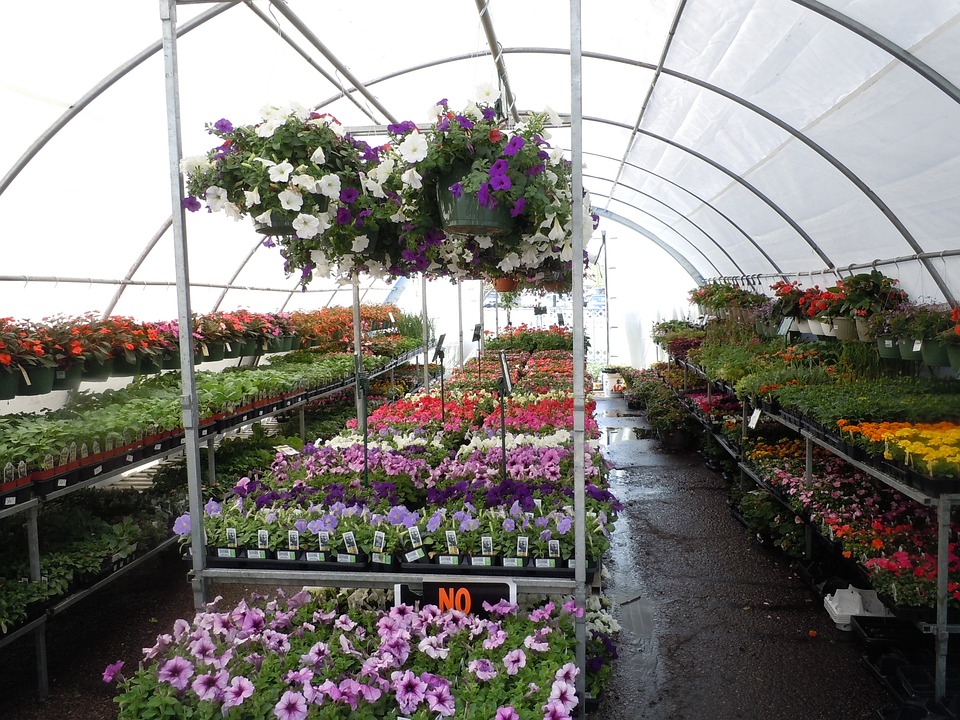Introduction
Urban farming has become a significant trend in recent years as cities across the globe look for sustainable solutions to meet the increasing demand for food.
With limited space and resources, traditional farming methods are often inefficient for urban areas.
However, the emergence of greenhouse gardens has revolutionized urban agriculture, allowing us to cultivate fresh produce in the heart of our cities.
In this article, we will explore the future of urban farming and how greenhouse gardens are transforming city landscapes.
The Benefits of Greenhouse Gardens
Greenhouse gardens present numerous benefits for urban farming, making them an ideal solution for cultivating plants in cities.
One advantage is the controlled environment provided by the greenhouse structure.
By controlling temperature, humidity, and lighting, farmers can optimize growing conditions, resulting in higher yields and better quality produce.
Furthermore, greenhouse gardens significantly reduce the dependency on traditional agricultural practices that require vast amounts of water.
With the ability to recycle and reuse water efficiently, greenhouse gardens conserve this precious resource while ensuring optimal hydration for plants.
This sustainable approach contributes to preserving water supplies in urban areas.
Another crucial advantage is the protection greenhouse gardens offer against pests, diseases, and extreme weather conditions.
By creating a physical barrier, greenhouse gardens shield crops from harmful insects and plant diseases.
Additionally, they safeguard plants from unpredictable weather, such as heavy rain, wind, or frost, ultimately reducing crop losses and maximizing yield stability.
The Future of Urban Farming
The future of urban farming lies in the expansion and integration of greenhouse gardens into the urban landscape.
As cities become more densely populated, space becomes a valuable commodity.
Greenhouse gardens address this challenge by utilizing vertical farming systems.
By growing plants in a vertically stacked arrangement, these systems maximize production within a limited area.
Moreover, as technology advancements continue, greenhouse gardens will benefit from innovations that improve energy efficiency.
Renewable energy sources, such as solar panels, can power the necessary artificial lighting and climate control systems.
Additionally, smart automation and monitoring systems enable farmers to optimize resource usage, reduce waste, and precisely manage the growing environment.
As cities strive for self-sufficiency in their food production, the integration of greenhouse gardens into buildings will become more prevalent.
Rooftop gardens and vertical farms incorporated into office buildings, residential complexes, and commercial spaces hold the potential to transform urban areas into vibrant, self-sustaining ecosystems.
The Impact on City Landscapes
The integration of greenhouse gardens has a transformative effect on city landscapes, contributing to greener and more sustainable urban environments.
These gardens offer a visual spectacle as lush greenery adorns rooftops and walls, replacing concrete and glass facades.
The introduction of plants and vegetation into cityscapes enhances air quality, reduces heat islands effect, and absorbs carbon dioxide, reducing greenhouse gas emissions.
Beyond the environmental benefits, greenhouse gardens also have a social and educational impact.
They create spaces for communities to engage in urban farming activities, fostering a sense of ownership, connection to nature, and a healthy lifestyle.
Additionally, these spaces serve as educational platforms where residents can learn about sustainable farming practices, nutrition, and the importance of biodiversity.
FAQs Section
Q: Can greenhouse gardens be implemented in all urban areas?
A: Greenhouse gardens can be implemented in various urban areas, regardless of their size or location.
The versatility of greenhouse structures allows them to adapt to different climates and environmental conditions.
However, factors such as available space, access to sunlight, and the necessary infrastructure should be considered when planning the implementation.
Q: Are greenhouse gardens financially viable for urban farmers?
A: While the initial investment for greenhouse gardens may be higher than traditional farming methods, the long-term benefits outweigh the costs.
High-quality produce, higher yields, reduced losses from pests and extreme weather, and year-round production contribute to the financial viability of greenhouse gardens.
Additionally, the growing demand for locally sourced and organic products provides a market that urban farmers can tap into.
Q: How do greenhouse gardens contribute to food security?
A: Greenhouse gardens enhance food security in urban areas by providing a local and reliable source of fresh produce.
By reducing the dependence on external suppliers and minimizing the carbon footprint associated with long-distance transportation, greenhouse gardens ensure a sustainable and consistent food supply, particularly in times of crisis or disruptions in the food distribution chain.
Q: Can greenhouse gardens be a viable solution for vertical farming?
A: Absolutely! In fact, greenhouse gardens are ideal for vertical farming, as they maximize production within a limited space.
By utilizing vertical farming systems, such as vertical hydroponics or aeroponics, greenhouse gardens can cultivate a wide variety of crops without the need for soil.
This opens up opportunities for multistory farming in urban areas.




